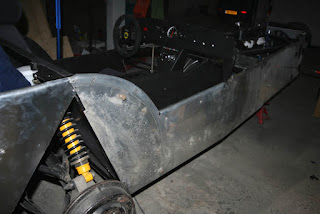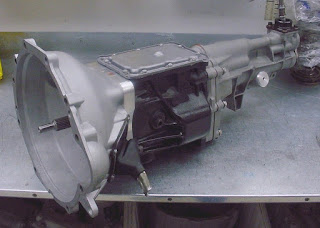The commonly known as T9 gearbox from Ford has been produced for quite some time and can be found in lots of different cars. In this post, I will try to collect as much information as possible about this specific gearbox because it is very often used in kitcars or for 5-speed conversions. As I only started collecting, this post will be updated during the next weeks. So if you haven't found yet what you're looking for, come back some time later and check. On the other hand, if you have information not yet displayed, please let me know by adding a comment or sending an email (the one in my profile).
If possible, I will post links to existing documents and post pictures I took myself or I found on the internet. If there are any copyright violations, drop a message and I will delete the concerned file.
Reading list:
(watch out for more links hidden further in this post)
For a start, I found this lovely sketch explaining the different
cases. (updated June 15, 2012)
Ford manual in german available
here. (updated June 16, 2012) size=10M
Complete chapter 6 in english
here. (updated June 16, 2012) size=33M
Interesting article from an old magazine (source unknown, author Jeff Mann) provided by Frank, a keen poster from the german Seven-IG forum. He provided me with lots of information about the T9. Frank, if you read this, thank you very much! Here's the
article. (updated June 22, 2012)
And a dedicated webpage:
http://www.type9gearbox.co.uk/
From the inside:
Sizes and dimensions:
Quick shift:
Most people
driving a Seven-type car opt for a quicker gear change mechanism. Less
travel means that the pivot point has to be altered. A simple graph
shows what this means. For a given movement of the x-axis, the pivot
point must be higher if you want a shorter y-axis.
It's
possible to build such a lever or to modify the existing one. The
Quaife lever is a very neat and well engineered solution including a
proper spring operated reverse lock rather then the original rubber
bellow. There are different types, short, straight, bent ... for
different gearboxes.
The bent lever is often used to prevent coliding with the dashboard. Another solution is to mount an extension system as above which works very fine. It is mounted where the gear lever originally sticks out of the gearbox and puts it back around 12cm. People sometimes lose that little black plastic saddle and wonder why changing gears is less precise. So keep an eye on it when you opt for changes to the original set-up. You still need it and at 5.-£ it's not cheap for a little plastic thingy.
You can buy the extension system or build it like the one from
Avon.(updated June 22, 2012)
At some point when putting the engine & gearbox out of the chassis, the lot has to be tilted upwards and some of the gearbox oil is spilled. Prior to close all the holes around the chassis (a.k.a. as fitting the body panels) the oil has to be filled to the right level again. When leaving the factory, those 'boxes get filled for lifetime which means that there is no filling plug above and no draining plug underneath. If needed, the oil is filled via above shown plug until it spills out again. A more elegant way is to fit a plug into the top cover. Some search gave SAE75W-90GL4 as the right viscosity.
Cheers.









































